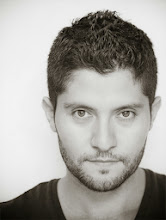(click to enlarge)
Here is an easy way to get JPEGs out of your RAW files. I know most DSLR cameras give you the option to shoot both RAW and JPEGs at the same time. Good idea, but it takes more space on your memory card. One of the more interesting options for me was some of these higher up DSLR cameras with two card-slots that let you write RAW files on one and JPEGs on the other.
The people at www.rawworkflow.com have come up with a very good alternative.
See camera manufacturers have a JPEG image embedded to all the RAW images you shoot. That's what you see on you LCD screen on the back of your camera. Not the RAW image. That is also why sometimes your images look a little different from your LCD screen to the actual raw image on your computer monitor (see image above). JPEG images have in-camera processing, to make them look more "finished". It is typical for a out-of-camera JPEG image to have some color enhancement, added contrast and sharpening among other things.
The folks at raw workflow created a tool to extract this file.
They call it IJFR (Instant JPEG From RAW) and it is a free utility. It extracts the already embedded JPEG file from your RAW images. The best part is that it does it quick. It is not even a program you have to run. It is more of a simple action your computer can do. All you have to do is a quick download it and set up and your good to go. You can do one file or a whole folder. You also have a size option, which lets you decide how small you want the files to be (this is great for quick e-mail sizes).
The image above shows you the visual difference between a RAW file and the embedded JPEG (notice I said "visual" difference). It is an untouched (other than beeing sized) image split in half. One side is the RAW file the other is the JPEG extracted by IJFR. You can see the effect some of the in-camera-processing has on the JPEG image. Feel free to click on the image to a full size to see an easier comparison.





No comments:
Post a Comment